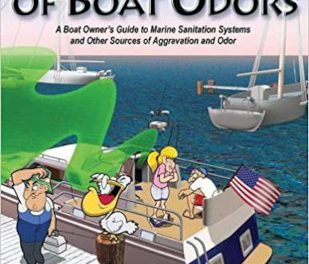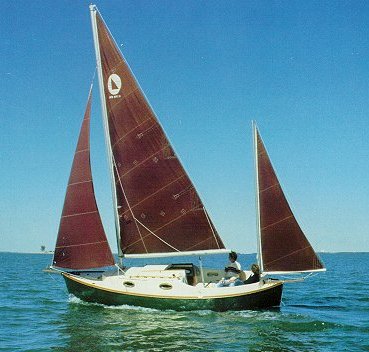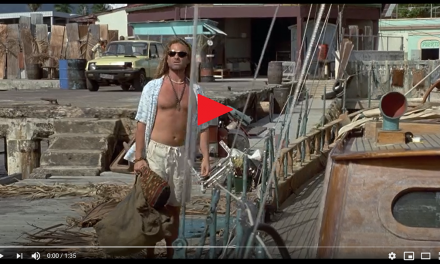
Since moving from a mooring to a slip, I’ve noticed that there is a great variety in the way people secure their boats to a dock. Some methods are seemingly bulletproof, others interesting, whimsical, even amusing. And always the question arises, “Will it work under any condition?” A walk along any dock will supply the casual observer with many solutions to this age-old problem of keeping your boat where you left it.
The marina where I’ve been keeping my boat is in New Bern, North Carolina, which is inland from the Outer Banks and experiences very little tide. As a result, the docks are fixed in place on pilings rather than on floats. However, there is sometimes a considerable rise and fall of the water level, depending on the wind–a lengthy southwesterly can lower the water as much as 2 or 3 feet and leave boats resting on the mud. Or, the opposite can happen, especially during one of the periodic hurricanes, when a surge can raise the water 5 feet or more. As a result, leaving just enough slack in dock lines is critical.
Keeping an eye on things isn’t easy when you live some distance from where you keep your boat, like I do. However, the staff members at my marina are especially vigilant and have their own way of doing things. For instance, they have safety lines running from each piling directly to the dock, so that if a boater comes into his slip in such a way that the bow (or stern) edges too far into his neighbor’s slip, the safety lines will keep the boat more or less where it should be. This is a terrific help for singlehanded boaters.
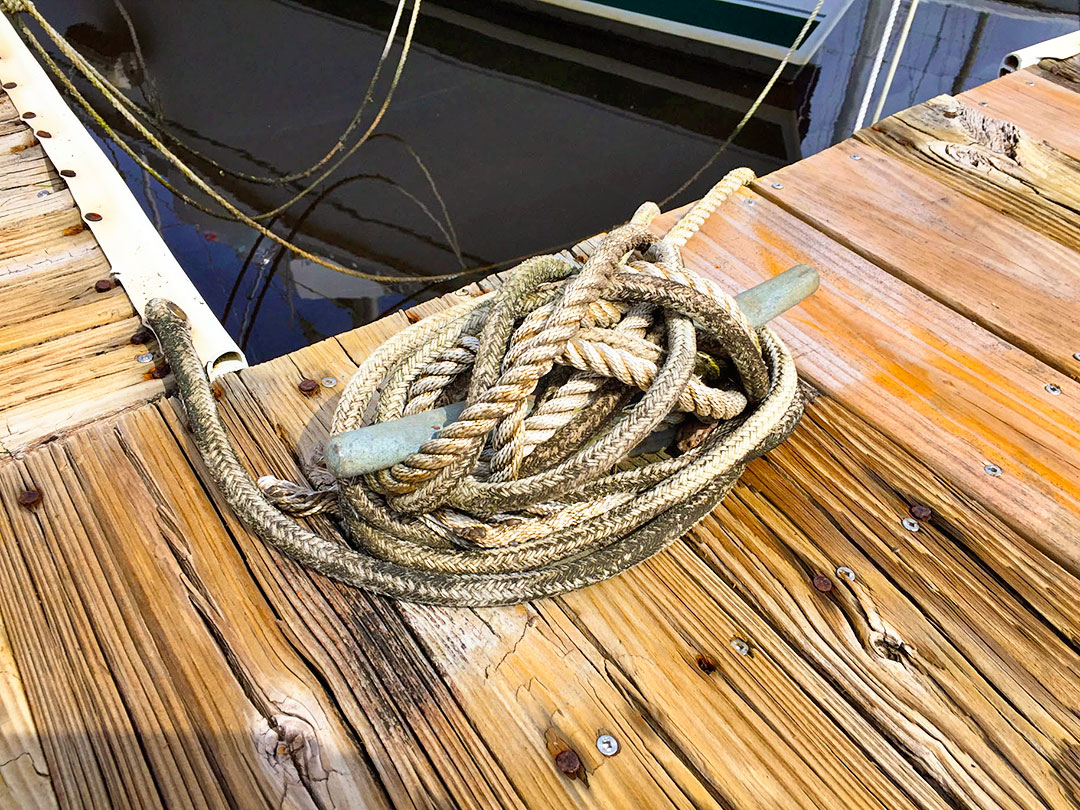
Also, upon return from a lengthy absence, it’s not uncommon to find that having secured your boat one way, someone on the marina staff (probably muttering about the idiot boat owner who left such a mess) has retied your docklines. Having experienced this phenomenon myself, I’ve noticed that the “official” way is to encircle the cleat one full time clockwise, then to cross the two opposite horns once each before finishing it off. The reason for doing it this way (a full turn around the cleat before finishing) is so that the line can be safely surged without it snaking away under a heavy load. Also, anti-chafe is always recommended. And naturally, only one boat to a single dock cleat.
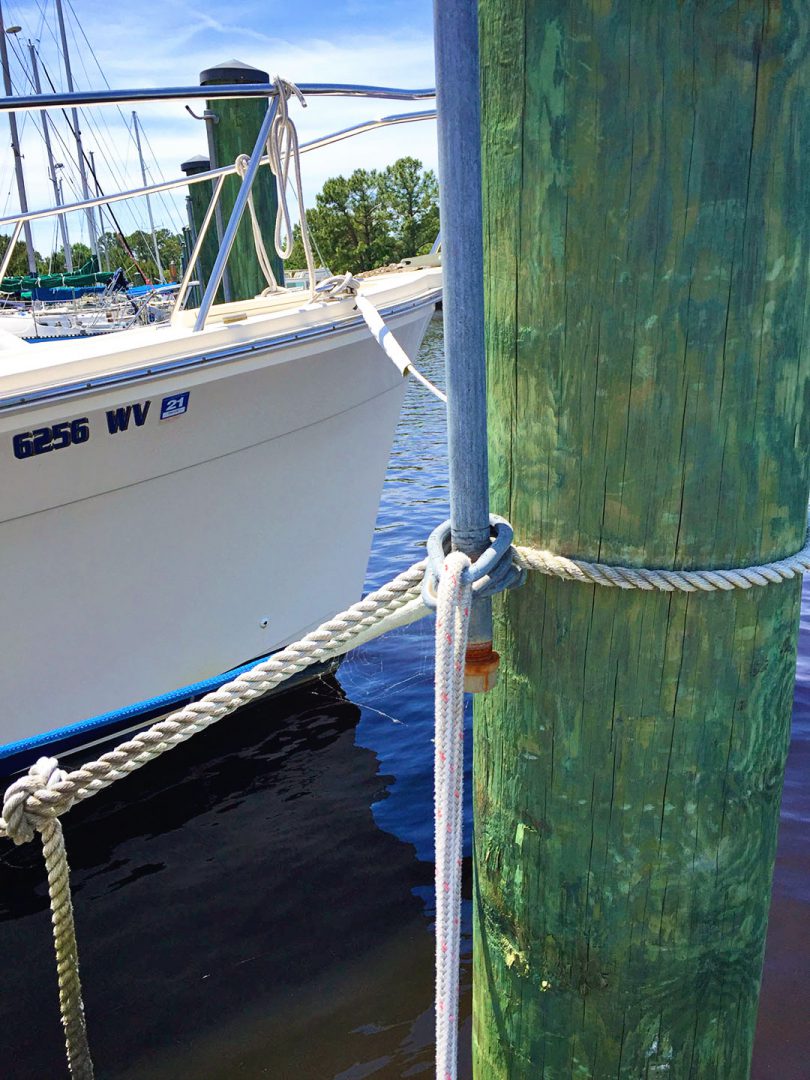
Some of the lucky boaters at my marina, like me, have pilings with rings that ride on iron pipes parallel to the piling. By running a line from the boat to the ring then back again to the boat, the boater can easily leave his or her slip—or return to it—without a lot of fuss. I’ve found that even when it’s windy, I can enter my slip or leave it singlehanded with little trouble if I’ve thought it through. As I approach my finger slip, I make note of the wind direction and whether it will tend to blow from port or starboard. If it’s from port, which is the more difficult of the two directions to deal with, I’ll approach as slowly as possible, and drift under power in neutral with just enough way on for steerage. Then I’ll scrub more speed by turning sharply starboard into my slip as close as possible to the pilings, to windward. After that I lock the helm, run the port-side stern line through one of the rings, and then make it fast to the stern cleat. Usually, I can reach the rings from the cockpit with little trouble. I’ve sewn a mark into the dockline with a contrasting color, so I know exactly where to secure it to the cleat. At that point, I can relax a bit and go forward. As the boat comes to a stop some 2 or 3 feet from the main dock, I’ll step onto the finger slip and begin securing the rest of the lines.

On my AMF 26’ Paceship, which is shorter than the distance between the pilings and the dock, I only use spring lines if a hurricane is forecast. As I don’t have midship cleats, the easiest way is to run the spring lines to the sheet winches. However, I’ve found that as I secure bow-in into my slip, I can get extra insurance by running the bow lines all the way across the dock to pilings near the shore. An added benefit to my particular location is that in most hurricanes, a nearby two-story building ends up blocking the worst winds. This certainly proved to be true during Hurricane Florence in 2018. Needless to say, any dock lines should have plenty of extra length so they can be safely re-tied from the dock by the marina crew, if necessary. And, of course, don’t forget your chafe-protection.




